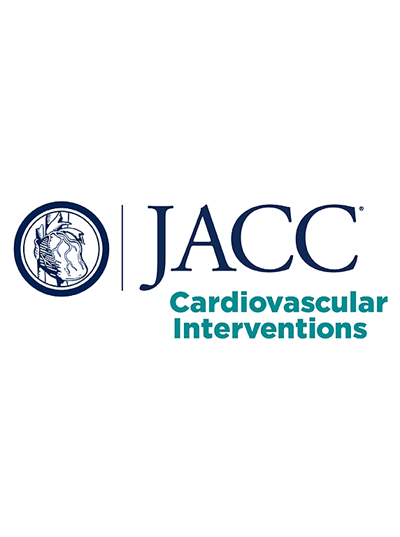在美国接受二尖瓣介入治疗的老年患者的趋势和晚期结果
IF 11.4
1区 医学
Q1 CARDIAC & CARDIOVASCULAR SYSTEMS
引用次数: 0
摘要
背景:二尖瓣干预可改善严重二尖瓣反流患者的临床预后;对现实世界患者中不同二尖瓣介入策略的使用趋势和长期结果了解较少。目的本研究的目的是描述二尖瓣介入治疗的使用趋势,并确定影响老年患者5年死亡率的因素。方法使用医疗保险和医疗补助服务收费中心索赔数据库,识别2017年1月1日至2022年12月31日期间住院接受手术或经导管二尖瓣介入治疗的≥65岁患者。主要终点为5年死亡率。结果在5年期间,共有172478例二尖瓣介入治疗。在此期间,每10万名医疗保险A部分受益人的二尖瓣干预数量增加了9.2%。手术发生率下降15.7%,而经导管边缘到边缘修复(M-TEER)增加了94.8%,经导管二尖瓣置换术(TMVR)增加了100%。手术的住院死亡率为6.9%,TMVR为4.0%,M-TEER为1.5%。术后5年死亡率为39.5%,TMVR术后为55.1%,M-TEER术后为61.9%。在低衰弱风险患者中,手术、TMVR和M-TEER的5年死亡率分别为24.4%、45.8%和52.2%;中度衰弱风险患者分别为44.8%、62.2%和70.7%;高脆弱风险人群分别为57.8%、74.2%和80.6%。社会脆弱性的四分位数逐渐与较高的死亡率相关。结论在经导管治疗的推动下,老年患者的二尖瓣干预随着时间的推移而增加。5年死亡率因干预类型而异,并受到身体虚弱和社会脆弱性的显著影响。本文章由计算机程序翻译,如有差异,请以英文原文为准。
Trends and Late Outcomes in Elderly Patients Undergoing Mitral Valve Interventions in the United States
Background
Mitral valve intervention improves clinical outcomes in selected patients with severe mitral regurgitation; less is known about the use trends and long-term outcomes of different mitral intervention strategies in real-world patients.
Objectives
The aim of this study was to describe use trends in mitral valve intervention and identify factors contributing to 5-year mortality in elderly patients.
Methods
The fee-for-service Centers for Medicare and Medicaid Services claims database was used to identify patients ≥65 years of age hospitalized for surgical or transcatheter mitral valve intervention between January 1, 2017, and December 31, 2022. The primary outcome was 5-year mortality.
Results
There were 172,478 mitral valve interventions identified over the 5-year period. The number of mitral valve interventions, indexed per 100,000 Medicare Part A beneficiaries, increased by 9.2% over this period. The incidence of surgery declined by 15.7% whereas transcatheter edge-to-edge repair (M-TEER) increased by 94.8% and transcatheter mitral valve replacement (TMVR) increased by 100%. In-hospital mortality rates were 6.9% for surgery, 4.0% for TMVR, and 1.5% for M-TEER. Five-year mortality was 39.5% after surgery, 55.1% after TMVR, and 61.9% after M-TEER. Among patients at low frailty risk, 5-year mortality rates were 24.4%, 45.8%, and 52.2% for surgery, TMVR, and M-TEER, respectively; among patients at intermediate frailty risk, they were 44.8%, 62.2%, and 70.7%, respectively; among those at high frailty risk, they were 57.8%, 74.2%, and 80.6%, respectively. Quartiles of social vulnerability were incrementally associated with higher mortality.
Conclusions
Mitral valve interventions in elderly patients are increasing over time, driven by transcatheter therapies. Five-year mortality varied by type of intervention and was significantly influenced by frailty and social vulnerability.
求助全文
通过发布文献求助,成功后即可免费获取论文全文。
去求助
来源期刊

JACC. Cardiovascular interventions
CARDIAC & CARDIOVASCULAR SYSTEMS-
CiteScore
11.60
自引率
8.80%
发文量
756
审稿时长
4-8 weeks
期刊介绍:
JACC: Cardiovascular Interventions is a specialist journal launched by the Journal of the American College of Cardiology (JACC). It covers the entire field of interventional cardiovascular medicine, including cardiac, peripheral, and cerebrovascular interventions. The journal publishes studies that will impact the practice of interventional cardiovascular medicine, including clinical trials, experimental studies, and in-depth discussions by respected experts. To enhance visual understanding, the journal is published both in print and electronically, utilizing the latest technologies.
 求助内容:
求助内容: 应助结果提醒方式:
应助结果提醒方式:


